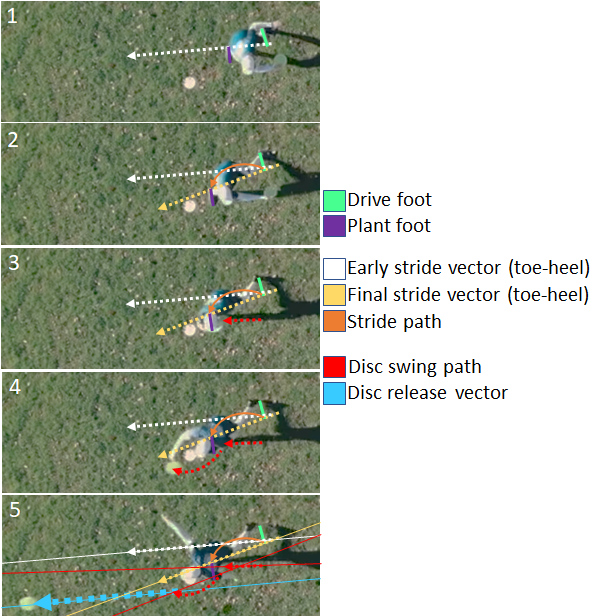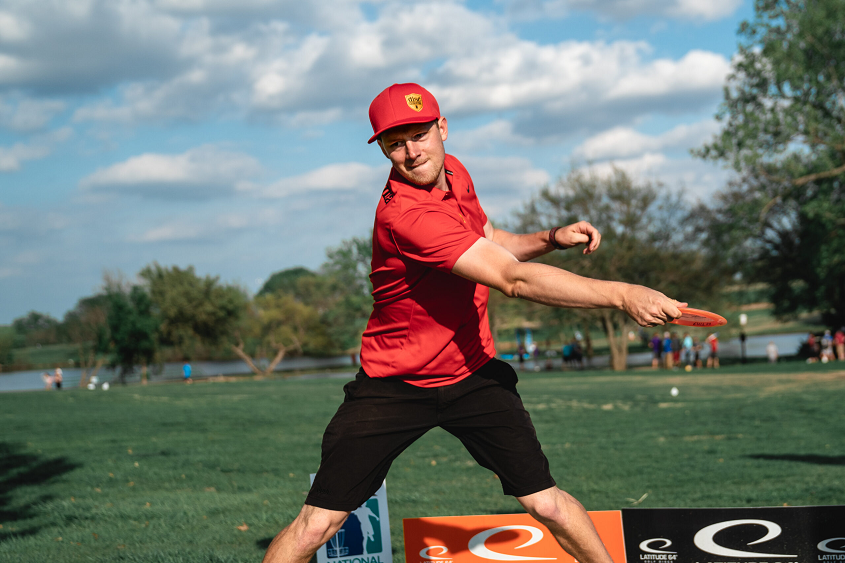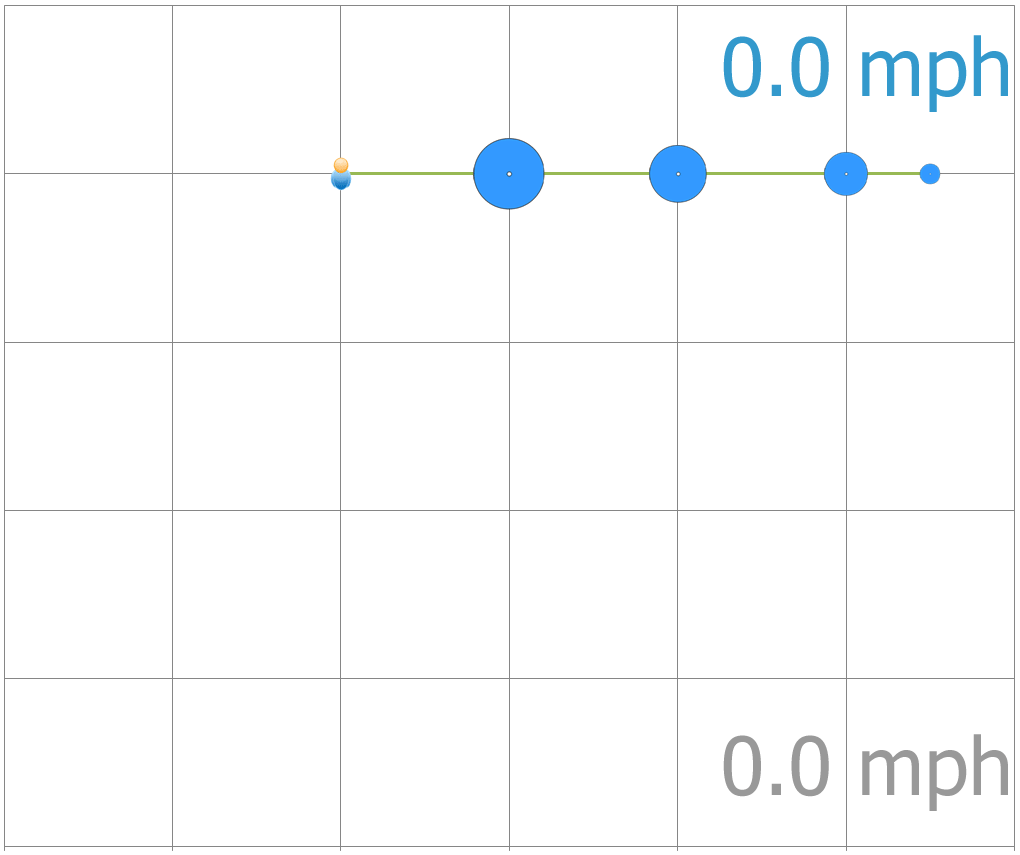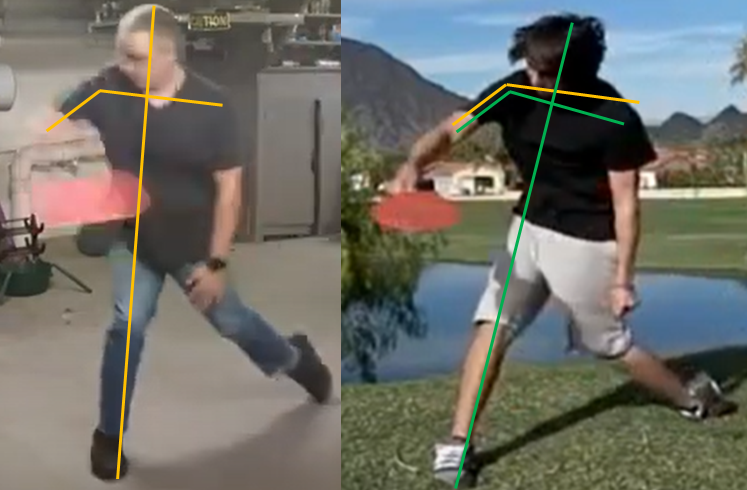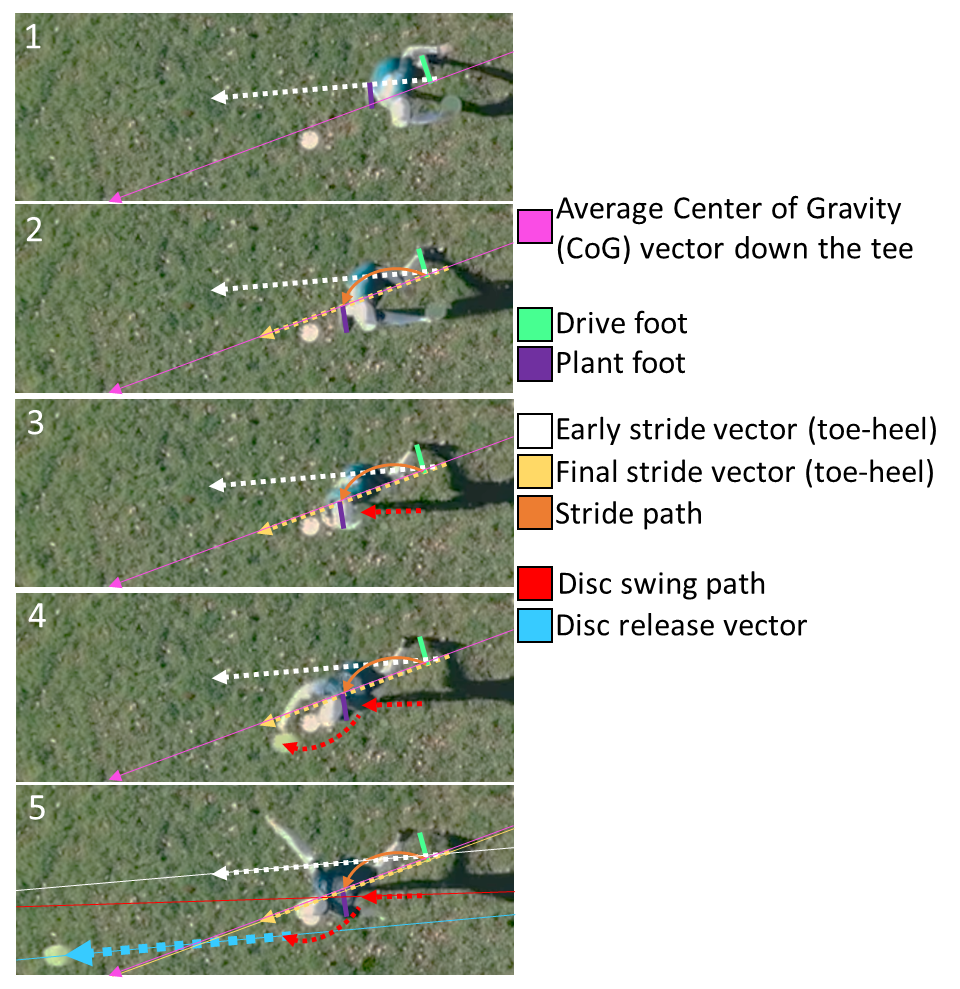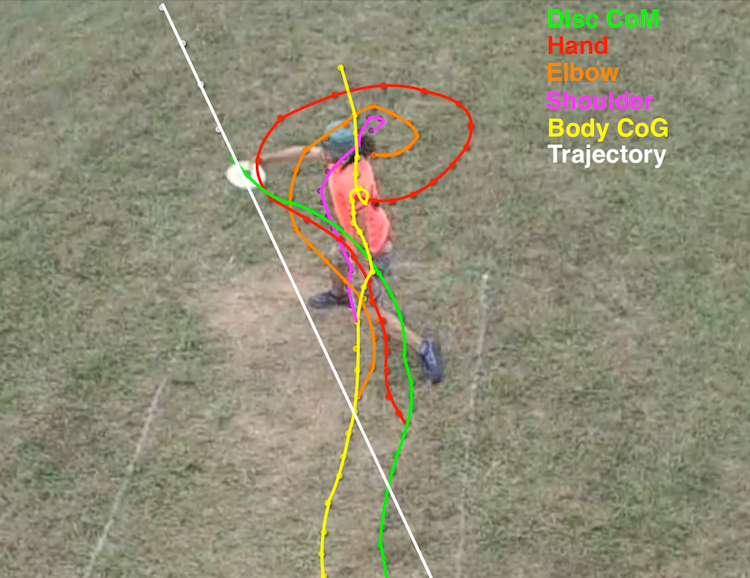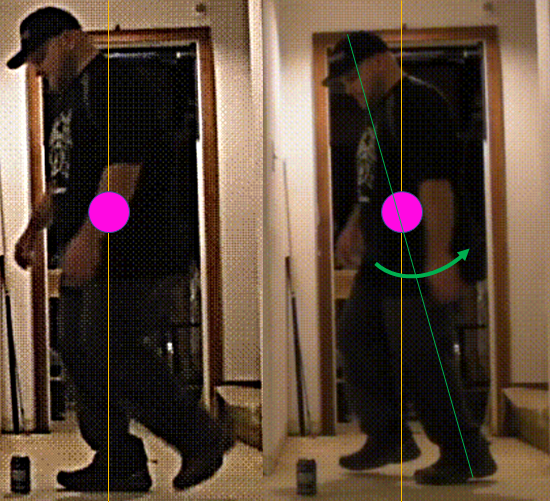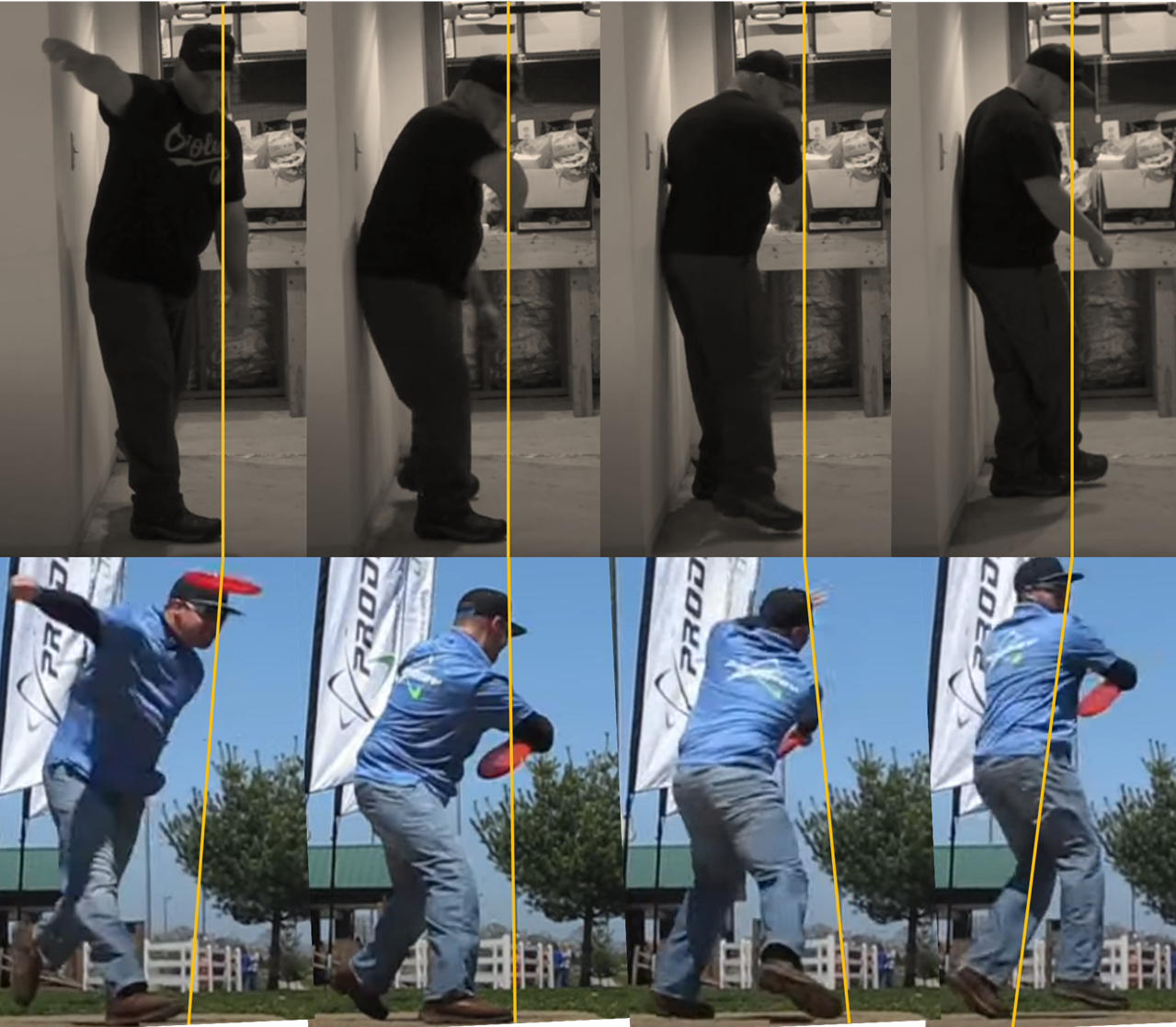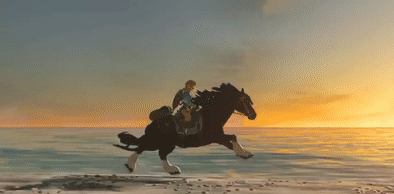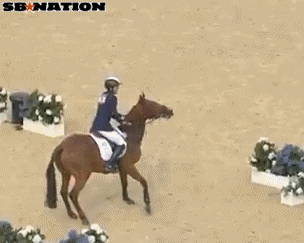Brychanus
* Ace Member *

Part 1 of 3.
Simon is one of the most popular players of all time, a former world distance record holder, and as of this writing, may be primed for one of the biggest sponsor deals ever after announcing his departure from Discmania [1] [2] hot off of a 4-win season in an increasingly competitive field.
Simon has "toned down" his style since the time of his elbow injury. He is a force to be reckoned with when his game is on, and many have speculated that if he valued and committed to winning more than showing off, his win record would be something to behold. Other pros sometimes talk about him being one of the most "naturally talented" golfers out there. He has lost some speed after injury and at the age of 30 his biggest smashes are likely behind him. But there have been very few throwers of the disc with his distance ability, and his form is often admired for its beauty and held up as an example for the rest of us.
Today I'm here to start answering the question that inevitably lurks in our admiration: "How does Simon throw so far?" - and the related dark thought we have in the quiet of the night: "can I maybe learn from him to throw a lot farther too?" [1] [2]
I think I have learned more about form from looking at Simon and his evolution and I enjoy watching him throw more than any other player, so I took the time to consolidate some thoughts and resources.
Advantages
-Playing history: tremendous youth advantage: began throwing plastic ~2 years old. All the body adaptation was happening while he was still developing, and he ended up with incredibly coordinated, flexible movement.
-Lever length/height: Some sources put him at roughly 6'1'', which is not enormous. However, I don't know about you, but I don't think many people have the long hands and limbs with narrow shoulders that Simon does.
-Mechanical efficiency: off the charts & evolving for many years (see below). He also appears incredibly coordinated and has a penchant for skilled, targeted actions like darts and golf.
-Training status: Maybe he doesn't have the "blood in the water" mentality McBeth does. But I'm pretty sure in terms of distance or control he's spent a lot more time at it for many more years than most of us.
Mechanics
You already know that they're world-class, and I'm not going to recap the thousands of resources here at DGCR - the details matter and they're there. But what makes them so good overall, and why did I pick Simon for this? How does it relate to other players (like you)?
On DGCR, we often discuss many pendulum concepts are common in golf, baseball, disc golf, and so on. The special thing (and in my opinion, the hardest) about a backhand as a sports move is that it is a loose, coordinated, athletic swing that happens bringing your eyes off the target and turning away from the target to drop in a direction most people are uncomfortable with, especially when they start later in life. The other part of that move (which I continue to appreciate more all the time) is that "The Good Swing" requires an exquisite transfer of momentum and landing in a way that you get an additional burst of ground force in the plant to swing from.
Simon is my favorite example of form evolution because he has one of the most extreme transitions between vertical and horizontal forces in form out there. I found it very hard to understand what this meant until I literally watched them side by side, where you can appreciate that despite appearances, the overall motion pattern is exactly the same.
Simon's extreme vertical form shows you the basis of a coordinated pendulum-like action, but what really stands out to me are:
(1) his levers
(2) his flexibility
(3) a profound amount of momentum coming into the swing. This kid is flying into the plant - in fully balanced control.
(4) his incredibly heavy crush
(5) how his transition/ride the bull move gets him off the rear foot swinging inside his posture and how quickly that crush and leverage whips the body through.
Everything about that vertical form is evident in his horizontal form, but I expect that over time he smoothed out some of what looks like slightly violent recoil (a young, light, flexible body can take a lot).
Like late-stage Simon, among other horizontal crusher specialists we can appreciate either the fast legwork of very athletic guys (e.g., Kuoksa) or the controlled and high-leveraged legwork of very long-levered people (e.g., Eagle). The levers have a lot to do with the differences in how players generate momentum
Late-stage Simon is an interesting case study in this respect because I would argue that he is somewhere between a Kuoksa and Eagle. Simon tends to get plenty of acceleration in his striding phase as he powers up before the final acceleration off the drive step into the crush (i.e., some of what he would have gotten from the huge vertical hop when he was younger has been stretched out horizontally). This is consistent with Simon's body type being somewhere between Kuoksa and Eagle, but somewhat closer to Eagle. If you take a page from Kuoksa's book and add it to Eagle's form, you get the same effect, except that Eagle's incredibly long legs and long arms relative to narrow shoulders are getting it done for him in fewer strides. This is also why players like Chris Dickerson with smaller frames and good but not astounding levers tend to run. Compare to Ezra. His arms aren't just ripped, they're very long.
Watching and listening players at full speed is important. Watch the slow video above, then immediately watch & listen to him at this moment in a casual distance contest.
That's momentum and effort there mediated through incredible mechanics.
The arm & leverage in the pocket
There are some specific flourishes that throwers gain over time. Simon and Gurthie both have pronounced pronation heading into the pocket, and pronounced supination heading out of the pocket into the hit. Theoretically this should increase the acceleration at the very tip of the whip, adding speed and likely RPM to the disc. It's more obvious in GG - you can look for it in Simon.
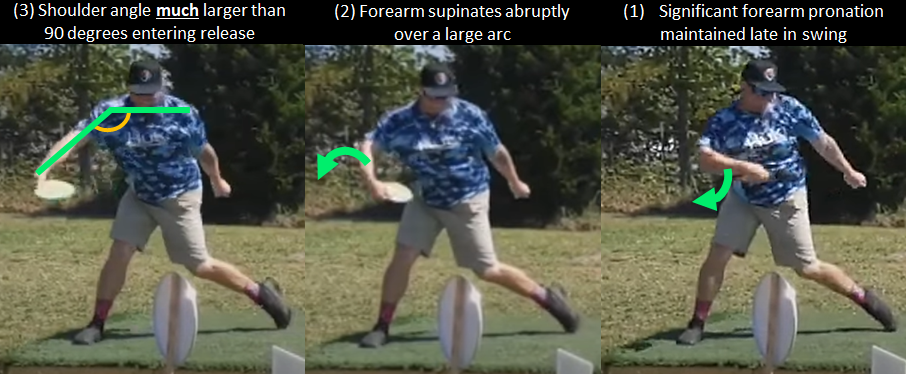
Last edited:

